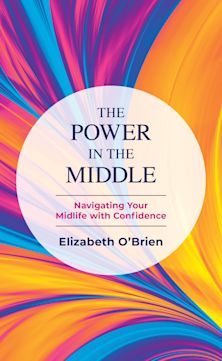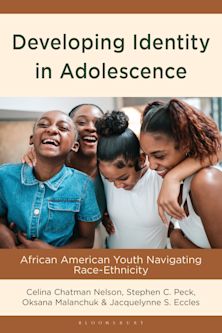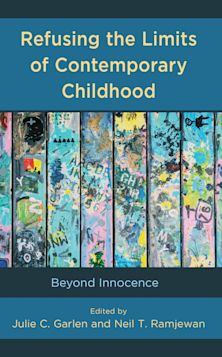- Home
- ACADEMIC
- Psychology
- Developmental Psychology
- Psychoanalytic Trends in Theory and Practice
Psychoanalytic Trends in Theory and Practice
The Second Century of the Talking Cure
M. Hossein Etezady (Anthology Editor) , Inga Blom (Anthology Editor) , Mary Davis (Anthology Editor) , Inga Blom (Contributor) , Harold Blum (Contributor) , Richard Cruz (Contributor) , Mary Davis (Contributor) , M. Hossein Etezady (Contributor) , Theodore Fallon (Contributor) , Michael S. Garfinkle (Contributor) , Alexandra M. Harrison (Contributor) , Richard P. Kluft (Contributor) , Kate Lieberman (Contributor) , Corinne Masur (Contributor) , Monisha Nayar-Akhtar (Contributor) , Sara Richardson (Contributor) , Gabriel Ruiz (Contributor) , Susan P. Sherkow (Contributor) , Ann G. Smolen (Contributor)
Psychoanalytic Trends in Theory and Practice
The Second Century of the Talking Cure
M. Hossein Etezady (Anthology Editor) , Inga Blom (Anthology Editor) , Mary Davis (Anthology Editor) , Inga Blom (Contributor) , Harold Blum (Contributor) , Richard Cruz (Contributor) , Mary Davis (Contributor) , M. Hossein Etezady (Contributor) , Theodore Fallon (Contributor) , Michael S. Garfinkle (Contributor) , Alexandra M. Harrison (Contributor) , Richard P. Kluft (Contributor) , Kate Lieberman (Contributor) , Corinne Masur (Contributor) , Monisha Nayar-Akhtar (Contributor) , Sara Richardson (Contributor) , Gabriel Ruiz (Contributor) , Susan P. Sherkow (Contributor) , Ann G. Smolen (Contributor)
You must sign in to add this item to your wishlist. Please sign in or create an account
Description
Psychoanalytic Trends in Theory and Practice serves as a guide for the novice, and a refresher for the expert, into the history and current status of major psychoanalytic concepts. Each chapter author, reviews the development of a concept over the history of psychoanalysis, includes clinical examples to illustrate the concept, and identifies current questions about the topic. Further, many chapters embody a developmental perspective, not just in terms of an idea or concept, but also in terms of the individual; these sections explore how the experiences of the child inform that of the adult. M. Hossein Etezady, Inga Blom, and Mary Davis honor core concepts that continue to inform contemporary psychoanalytic practice, demonstrate the ongoing relevance and utility of the psychoanalytic perspective, and provide a solid and integrative foundation for further exploration into the next generation of theory and clinical work.
Table of Contents
Chapter 2: A Developmental Model to Enhance Understanding of Therapeutic Action by Alexandra Harrison
Chapter 3: Observing Development from Infant to Parenthood: Separation-Individuation, Attachment, and Intersubjectivity in the Clinical Encounter by Inga Blom
Chapter 4: Gender Fluidity and Analytic Fluidity by Gabriel Ruiz
Chapter 5: Severe Emotional Disturbances in Childhood by Theodore Fallon
Chapter 6: Narcissism: How It Develops and How It Appears by Mary Davis and M. Hossein Etezady
Chapter 7: A Developmental Perspective on Trauma by Ann Smolen
Chapter 8: Depression: A Psychoanalytic Perspective by Corinne Masur
Chapter 9: The Dissociative Disorders by Richard P. Kluft
Chapter 10: Psychoanalytic Aspects of Somatics by Richard Cruz
Chapter 11: Back to Freud’s Beginning: Looking at Neurosciencee Through a Contemporary Psychoanalytic Lens by Susan P. Sherkow
Chapter 12: Culture, Socialization, and Creativity in Analytic Practice by Monisha Nayar-Akhtar
Chapter 13: Psychological Testing for Psychoanalysis by Michael Garfinkle and Sara Lynn Richardson
Product details
| Published | 24 May 2018 |
|---|---|
| Format | Ebook (PDF) |
| Edition | 1st |
| Extent | 1 |
| ISBN | 9798881884901 |
| Imprint | Lexington Books |
| Illustrations | 2 b/w illustrations; |
| Publisher | Bloomsbury Publishing |
About the contributors
Reviews
-
This volume of 13 essays by practitioners and theorists of psychoanalysis covers immense ground, and the editors deserve praise for including a broad range of topics relevant to the current psychoanalytic enterprise. The topics treated in this book are sure to excite both novices and experts: for example, narcissism, gender fluidity, emotional disturbance in childhood, depression, dissociative disorders, attachment and intersubjectivity, psychosomatics, and neuroscience. Each chapter author reviews a particular psychoanalytic concept's historical development, provides illustrative clinical examples, and reflects upon the topic's contemporary relevance. Many essays take a developmental perspective in terms of the individual's growth and maturation, and in this approach, a debt to the theorist Margaret Mahler can be discerned. The essays collected here tie theory to practice in eminently accessible language, providing a solid platform for current practitioners who wish to expand and deepen their knowledge of a field whose often postulated moribund nature is here belied. Well suited for both practitioners and students of psychoanalysis and psychology.
Summing Up: Recommended. Upper-division undergraduates through faculty and professionals.Choice Reviews
-
The contributors to this timely book have successfully evaluated and updated the implications of concepts and practices in an extensive range of topics, as well as made these ideas accessible to new audiences. Most impressive is the concise but excellent historical and updated literature reviews designed to orient the reader to how theory has evolved over time. The illustrative clinical material demonstrates t
he contemporary relevance of psychoanalytic ideas and practices that identify questions that still need to be answered. There is a gem of a chapter on open systems theory, leading to multiple simultaneous meaning making attempts and repairs, as well as a chapter on how to keep open and fluid the process of gender creativity. The range of expertise, depth and breadth of these authors is impressive. This is vitally important reading for psychotherapists from all backgrounds. The authors provide a masterful translation of complex concepts into a clinical approach that is forever enhancing.Wendy Olesker, PhD, New York Psychoanalytic Society and Institute
-
The contributors to this volume, who were influenced by Margaret Mahler, give her the recognition that her work deserves. It is unfortunate that the more recent interest in attachment theory has made some psychoanalysts lose sight of the importance of separation individuation in child hood and in all subsequent phases of the life cycle. Margaret Mahler's work remains for the most part theoretically sound and clinically apt as is evident in all the chapters of the book.
Arnold Richards, MD, editor of internationalpsychoanalysis.net

ONLINE RESOURCES
Bloomsbury Collections
This book is available on Bloomsbury Collections where your library has access.



































